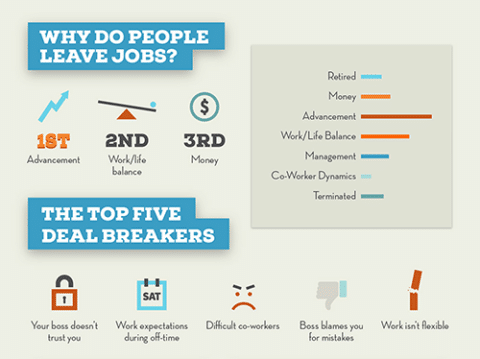The Covid pandemic brought a revolution in the way we work. More employees than ever are working remotely or opting for hybrid and flexible work.
Yet, this move to remote hasn’t been easy for everyone and many employees are finding it difficult to stay motivated away from the office. With remote work set to stay, managers need to consider how to boost motivation in the workplace – from afar.
Employees are more demotivated than ever…

Even before Covid, employee motivation was declining. In 2019, nearly a third of workers said that they did not feel motivated to work, up from 18% in 2018.
In the 2020s, employees are dealing with constant stress and uncertainty and managers need to work even harder to keep employees motivated and engaged. A lack of motivation has serious consequences for an organization, from decreased employee productivity to higher staff turnover. But it doesn’t have to be this way, here are 8 ways to increase motivation in remote teams.
Here’s how to motivate employees from afar
1. Reward individual and team success
Everyone wants to be rewarded for a job well done, and it doesn’t always need to be financial. Experiences can reward employees for their work while also building stronger team bonds. In fact, 72% of millennials value experiences more than things.
HR might wonder how to motivate a remote team member with this type of reward, the answer lies ‘outside the box’. Host a virtual breakfast and have pastries delivered to employees. Get everyone together on a Teams meeting to toast to their success. For something unique, organize a virtual escape game. These virtual team-building activities are a great way to increase motivation.
If an employee has landed an important contract or pulled off a big event, let people know. Recognize their achievement by posting on the company intranet, and maybe send them a bottle of bubbly if they’ve done a super job. One study found the number one driver of employee engagement was recognition.
2. Recognize important moments
Recognizing the small or big events in employees’ personal lives is a simple way to create a moment of happiness in their day. A shout-out on the intranet on an employee’s birthday, or after a wedding or birth will bring a smile to everyone’s face. Maybe a colleague has run a marathon or raised money for charity, recognition of non-work achievements acknowledges people as more than just employees.
Recognition makes people happy and happy employees are 12% more productive.

3. Integrate non-work activities
In the move to remote work, employees lose out on social occasions like team lunches or after-work drinks. Grabbing a sandwich with a co-worker or a coffee with the team is a chance to catch up, brainstorm problems, and socialize. Maintain these moments with remote workers through virtual coffee calls, water cooler chats, or after-hours events on Teams. Implement these into a wider employee engagement strategy to boost motivation.
https://www.youtube.com/watch?v=9LWK-MTEysU
4. Encourage switch off
No one can operate at 100% all of the time but in a remote work setting, it can be hard to switch off at the end of the day especially when employees are bombarded by digital communications. So, if employees can’t physically leave their office, when their home is now the office, they need new ways to separate the two.
Create guidelines for remote employees on when they are expected to be online. Encourage colleagues to respect these hours. Store these guidelines where employees can find them, like on the company intranet. These steps will help promote digital wellbeing.
Facilitate a home-work balance by encouraging a mentality of work done, not hours spent.
5. Highlight career opportunities
Employee motivation can suffer if staff can’t see a clear path to progress within an organization and it can lead them to look elsewhere for opportunities. In fact, one of the main reasons employees leave their job is career progression. Often internal candidates are unaware of job openings, or their eligibility to apply.
HR managers should ensure job postings open to current employees are advertised to them. Regularly posting open positions on the company intranet lets employees know what roles are open. Even if they are not eligible to apply yet, it motivates employees to get to the stage where they are.
HR managers can also encourage employees to share open roles with their wider network, as part of an employee advocacy program. Provide the motivation for employee advocacy by rewarding employees for any recommended contact who is hired.
6. Give employees flexibility in where they work from
Employees also want flexibility in their workday, and the pandemic has only amplified this. One study found that after working remotely, 60% of employees wanted flexibility on where and when they work from going forward.
The days of being tied to a desk from 9 to 5 are over, employees want to have autonomy in how they do that work. They also want a better work life balance. Organizations and HR managers can facilitate this by offering flexible scheduling, the option to work remotely, in-office, or a combination of both with a hybrid workplace model. Not offering remote options can negatively impact motivation, and push employees to leave for a more flexible employer.

7. Create a positive work environment
Happy employees are more motivated and productive but staying upbeat while working alone from home is tough. Walking into an office to be greeted by friendly colleagues creates a positive space to boost morale. Remote employees need this too, and it can be replicated through the digital workplace. An intranet is a social space to share good news stories. HR and managers can encourage everyone in the organization to create a positive digital workplace. One way to do this is to create specific spaces dedicated to good news, coffee chats, or social spaces.
8. Support employees with the right digital tools
Understanding how to motivate employees from a distance just requires some strategic planning and the right digital tools. Ensure employees are equipped with the technology they need to get their work done, collaborate, and stay productive.
The best way to motivate employees is to simplify their day-to-day work and create an environment that allows them to thrive. Provide them with a space like a corporate intranet where they can stay informed on company news and updates, building a sense of belonging.


